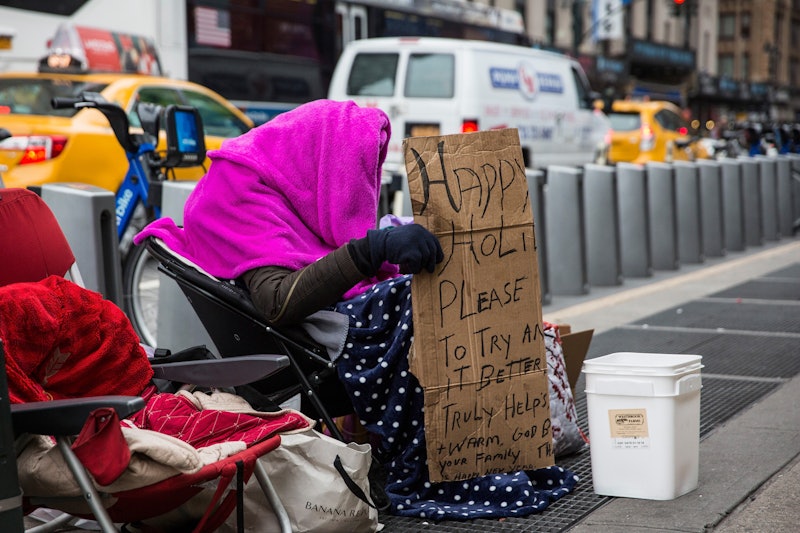News
Cuomo Wants The Homeless Off The Streets
New York Gov. Andrew Cuomo has issued an executive order requiring all homeless people in the state to be moved indoors, by force if necessary, if and when the temperature drops below 32 degrees. The plan would involve placing homeless people in shelters and other types of enclosures. According to Cuomo, it's all about "helping one another and basic human decency." While the move appears to be well-intentioned, the pros and cons of Cuomo's homelessness policy illustrate why the situation isn't as clear cut as it may seem.
Though it's impossible to say exactly how many homeless people in New York are living on the streets (as opposed to inside shelters), estimates peg the number at several thousand. That's a problem in its own right, of course, and it's now been made worse thanks to the positively chilling temperatures expected to sweep New York in the new year. Forecasters predict that New York City may hit a low of 16 degrees before wind chill is factored in, and single-digit temperatures in Buffalo.
Such a freeze poses a serious health risk to anybody living on the streets, and that's ostensibly what prompted Cuomo's order. Despite this, there are serious potential issues with the policy, and support for it is far from unanimous. Let's take a look at some of the complexities at play here.
The Pros
The most obvious argument in favor of this order is the simplest: It will give New York's homeless some degree of warmth amidst a positively freezing winter. According to the Centers for Disease Control, about 6,660 people died from hypothermia, excessive natural cold, or both between 2006 and 2010. It goes without saying that when you're forced to live outside in freezing temperatures, that risk skyrockets. If nothing else, getting homeless people indoors reduces this risk.
Additionally, there are a lot of people in New York who, for a variety of reasons, simply don't like the presence of homeless people in their day-to-day life. I'm personally inclined to take a more sympathetic view toward the homeless, but needless to say, there are plenty of New Yorkers who see them as a drain on their own quality of life, and the city has sometimes responded to this sentiment with extreme measures. Without getting into the weeds of that debate, Cuomo's actions have the potential to please both homeless people and people who don't like homeless people: Give the homeless some warmth, and reduce other New Yorkers' exposure to something they do not like.
The Cons
One of the biggest potential problems with this policy is that some homeless people simply don't want to go to shelters. One homeless man, speaking to 1010 WINS, remarked that homeless shelters can be violent, with "people being stabbed up, people being robbed, people being abused." New York City's extensive subway system is an alternative source of warmth for those without homes, and many may prefer this option over forcible placement in potentially dangerous shelters.
There's also the possibility, which some activists for the homeless have raised, that Cuomo's policy is illegal. According to New York City Mayor Bill de Blasio's office, the only situations in which a homeless person may be forcibly removed from the streets is if they commit a crime or are involuntarily admitted for a psychiatric evaluation, or treatment, after it's determined they're a danger to themselves or others. A civil rights lawyer told The New York Times that, depending on how the policy is carried out, it could run afoul of the state's Mental Hygiene Law, which outlines strict criteria under which somebody can be involuntarily taken off of the streets.
Regardless of how the policy is implemented and what its ultimate effects are, it’s a helpful illustration of why even the most well-intended policies are rarely as cut-and-dry as they may seem on the surface.
